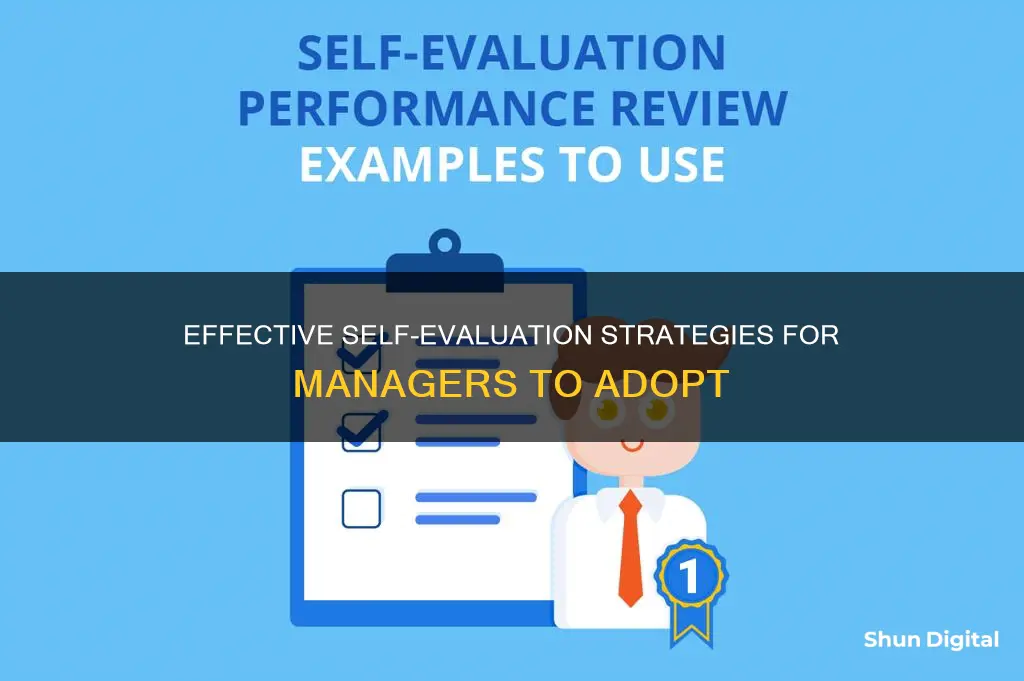
Evaluating and monitoring a manager's performance is essential for organisational success and employee well-being. It is a process that involves collecting feedback from multiple sources, including peers, subordinates, and superiors, and analysing both qualitative and quantitative data. This comprehensive approach ensures that managers are effectively leading their teams and fostering a positive work environment.
There are several methods and tools available to assess a manager's performance, such as 360-degree feedback, self-assessments, upward feedback from team members, and the use of evaluation software and platforms. By combining these techniques, organisations can gain valuable insights into the strengths and areas of improvement for their managers.
Additionally, it is crucial to establish clear performance indicators and set expectations for managers, including key responsibilities and performance standards. Regular evaluations and check-ins are also recommended to provide timely feedback and promote continuous improvement.
Overall, evaluating a manager's performance is a critical aspect of organisational success, as it ensures effective leadership, improves employee engagement, and contributes to a healthy and productive work environment.

360-degree feedback
The 360-degree feedback process typically involves an anonymous online form with questions covering a broad range of workplace competencies. The questionnaire includes rating scales and space for written comments. The person being evaluated also fills out a self-rating questionnaire with the same questions. The results are then tabulated and presented in a format that helps the recipient create a development plan.
The benefits of 360-degree feedback are significant. It offers a well-rounded assessment that can guide personal and professional development. It helps improve self-awareness, promotes accountability and ownership, and can be an effective tool for employee development. Additionally, it provides managers with an understanding of their strengths and weaknesses, which can be used to create leadership development plans.
However, 360-degree feedback is not without its challenges. It can be bureaucratic, politically charged, and time-consuming. To get the most out of this process, it is important to ensure that employees understand the benefits and that the feedback is provided consistently. It is also crucial to separate 360-degree feedback from employee evaluations and performance reviews, and to provide support and action plans post-review.
Overall, 360-degree feedback is a valuable tool for manager self-evaluation and performance monitoring, offering a comprehensive and holistic view of an individual's performance and guiding their professional growth.
LCD vs IPS: Which Monitor is the Best Choice?
You may want to see also

Self-assessment
Self-evaluations are a critical method of measuring performance. They involve creating objective criteria to determine how close an organisation is to reaching its performance goals. Evaluations can take the form of questionnaires, surveys, or scored assessments. The goal of any self-evaluation is to gain a clear picture of the current state of the business and devise plans to reach its goals.
This method of self-assessment can complement other evaluation tools by providing a balanced view of performance from the manager's perspective. It is a way to hold managers accountable and ensure they are effectively leading their teams and keeping them on the right track.
- Ensure confidentiality: It is important that employees feel comfortable providing honest feedback. Anonymous evaluations can guarantee confidentiality and increase the likelihood of honest responses.
- Share clear performance indicators: Explaining the types of metrics used to evaluate performance creates transparency. Clear performance metrics ensure that managers understand what is expected of them and what constitutes good performance.
- Reflect on their performance: Encourage managers to reflect on their achievements, challenges, and progress. This helps them take ownership of the evaluation and allows them to identify areas for improvement.
- Use a feedback tool: Integrating 360-degree feedback into the evaluation process allows for input from peers, team members, and other supervisors, providing a more comprehensive view of the manager's performance.
- Create a regular cadence for evaluations: Regular evaluations build a structured framework for ongoing feedback and allow for timely adjustments and sustained professional growth. The frequency of these evaluations may vary depending on the organisation's size and workload.
Overall, self-assessment is a valuable tool for managers to gain insights into their performance, identify areas of improvement, and develop strategies to reach their goals.
Identifying Your LG Monitor: A Step-by-Step Guide
You may want to see also

Confidentiality
Define Confidentiality Policies:
Before conducting any performance evaluation, managers should establish clear and consistent confidentiality policies. These policies should define what confidentiality means, why it is important, and how it will be enforced within the organisation. Policies should address who has access to performance data, how long it is retained, how it is utilised, and the repercussions of violating confidentiality. It is crucial to communicate these policies effectively to employees and provide training to ensure compliance.
Use Secure Methods and Tools:
Managers should employ secure and reliable methods for collecting, sharing, and storing performance data. Avoid using insecure methods like paper forms, email attachments, or unencrypted devices, which can be easily compromised. Instead, opt for online platforms, cloud services, or encrypted software that offer features such as encryption, password protection, access control, and audit logs. Ensure that the chosen methods comply with relevant laws and regulations, such as GDPR or HIPAA.
Respect Privacy and Consent:
Performance evaluations often involve sensitive information, so it is essential to respect the privacy and consent of team members. Inform them about the purpose, scope, and process of the evaluation, and obtain their agreement before collecting any data. Avoid discussing or requesting irrelevant personal or sensitive information, such as health, family, or financial status, unless it directly impacts the performance criteria. Provide team members with the opportunity to review, comment, and correct their performance data before sharing it with others.
Limit and Monitor Access:
Restrict access to performance data to only those with a legitimate need to know, such as the employee, their manager, or HR department. Minimise the amount of data shared and revoke access when it is no longer required. Monitor and audit access logs regularly, and address any suspicious or unauthorised access attempts.
Regular Review and Update:
By implementing these practices, managers can maintain the confidentiality of performance evaluations, protecting the privacy and trust of their team members.
Monitor Lizard in Your Home? Here's How to Get Rid of Them
You may want to see also

Performance metrics
Quantitative Metrics
- Team productivity and efficiency: This includes metrics such as project completion rates, work quality, and project completion times. For example, tracking a manager's ability to meet key performance indicators (KPIs) like sales targets or customer satisfaction scores.
- Employee retention rates: A high retention rate suggests effective management, a positive work environment, and motivated employees.
- Team promotion rates: Tracking the rate at which team members receive promotions reflects a manager's ability to develop and nurture talent.
Qualitative Metrics
- Employee satisfaction and engagement: Utilize surveys and feedback mechanisms to gauge employees’ satisfaction with their managers. High levels of employee satisfaction often indicate strong management.
- 360-degree feedback: This holistic approach involves gathering feedback from peers, subordinates, and superiors to provide a comprehensive view of a manager's performance and identify strengths and areas for improvement.
- Leadership and Communication skills: Assess a manager's ability to convey information effectively, actively listen, and create an environment for open and transparent conversations.
- Conflict resolution skills: Effective managers should be able to address and resolve disputes quickly and fairly, maintaining high team morale and collaboration.
- Decision-making and problem-solving skills: Managers should be able to make strategic decisions, adapt to changes, and carefully weigh the pros and cons of their choices.
- Delegation skills: Effective delegation involves clear communication, autonomy for team members, and a fair distribution of the workload to prevent burnout.
Additional Metrics
- Innovation and creativity: Encourage creativity and new ideas to stay competitive and drive business growth. Metrics can include the number of new initiatives, process improvements, and creative solutions implemented by the team.
- Mentoring and coaching: Assess the extent of a manager's mentoring and coaching activities outside their day-to-day role. Improvements in team performance and individual career progression can be indicators of effective mentoring.
- Professional development: Evaluate how well managers support the career growth of their team members through training, mentoring, and growth opportunities.
- Manager's own professional development: Track the manager's participation in professional development programs and their acquisition of new skills to ensure continuous learning and improvement.
Monitoring Internet Usage: A Guide for Modem Users
You may want to see also

Regular check-ins
Confidentiality and Trust
Confidentiality is crucial for honest and open feedback during check-ins. Employees should trust that their identities will be protected and that their feedback will not lead to any hostile reactions from managers. Anonymous evaluations can be an effective way to guarantee confidentiality and encourage truthful responses. Building trust with managers is also essential, assuring them that the conversation will stay private and creating a safe space for them to share challenges and seek guidance.
Clear Performance Indicators
It is important to define clear performance indicators and metrics that will be used to evaluate the manager's performance. These may include work quality, quantity, and efficiency metrics. Explaining these metrics creates transparency and ensures that both parties understand what constitutes good performance. These metrics also serve as a reference point for tracking progress during subsequent check-ins.
Reflect on Performance
During check-ins, it is helpful to reflect on the manager's performance by discussing their accomplishments, challenges, and areas where they can improve. Providing direct examples can make it easier for the manager to understand the feedback and identify specific areas for improvement. For instance, instead of vague statements like "I like how you manage your time," try something more specific such as "I like the way you redefined your priorities to make sure your last project was completed on time."
Regular Cadence
There is no one-size-fits-all timeframe for conducting manager performance check-ins. The frequency may vary depending on the organisation's size and the availability of the manager and their team. However, regular and consistent check-ins are essential, whether they are held annually, quarterly, or bi-annually. This structured framework helps build a culture of continuous feedback and improvement.
360-Degree Feedback
Integrating 360-degree feedback into the evaluation process provides a comprehensive view of the manager's performance. This involves collecting input from peers, team members, and other supervisors, allowing for a holistic assessment. 360-degree feedback tools can facilitate this process and ensure that feedback is gathered from all relevant sources.
Timely Adjustments
Adjusting Text Size on LG 27 Monitors: A Simple Guide
You may want to see also
Frequently asked questions
Evaluating a manager's performance helps organisations identify leadership problems and improve employee engagement, productivity, and morale. It also contributes to a healthy work environment by promoting mutual respect and collaboration.
There are several key steps to effectively evaluate a manager's performance:
- Ensure confidentiality to encourage honest feedback from employees.
- Clarify issues raised by employees and take immediate action to address them.
- Request feedback from employees to monitor improvements in leadership.
- Use a combination of Likert scale, yes or no, and open-ended questions to evaluate a manager's performance.
There are two main types of measures: qualitative and quantitative. Qualitative measures evaluate personal, behavioural, and cognitive aspects, such as problem-solving skills, communication, and delegation abilities. Quantitative measures, on the other hand, are results-based and include metrics such as customer satisfaction scores, market adoption rates, and product launch times.
Essential skills to evaluate in a manager's performance review include leadership skills, supervisory skills, communication skills, emotional intelligence, and strategic thinking. Leadership skills refer to the ability to influence and collaborate with people to achieve a common goal. Supervisory skills involve monitoring and guiding employees while providing feedback and criticism. Communication skills are crucial for conveying and receiving information effectively. Emotional intelligence is important for building long-term relationships with employees and fostering trust. Strategic thinking enables managers to plan effectively and make adjustments towards long-term goals.







